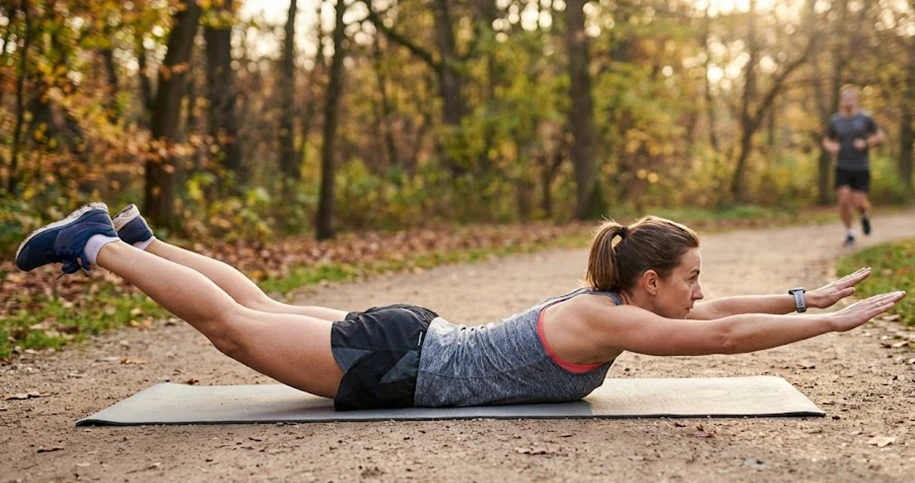Downhill running demands more than just bravery it takes skill, strength, and smart training. Learn how to conquer descents with expert tips that protect your body and boost your speed.
Want to fly down hills with confidence, speed, and without wrecking your quads for days after?
Whether you’re eyeing a downhill-heavy race or just want to become more efficient during your trail runs, mastering the art of downhill running is essential.
Here are the best strategies to help runners tackle those descents with skill and strength.
Why Downhill Running Matters
While climbing gets a lot of the spotlight in endurance races, it’s often the descents that break runners down literally.
Running downhill places unique demands on your muscles and joints. Instead of pushing up, your body now has to resist gravity, forcing your muscles to contract eccentrically to slow you down
That kind of muscle work can leave you sore for days, especially if you’re unprepared.
Uphill vs. Downhill: A Tale of Two Challenges
Climbing calls for stamina and strength.
But when you’re heading downhill, the name of the game is control, agility, and technique.
Unlike the cardio-heavy effort of climbing, descents demand muscle control to absorb impact and the longer and steeper the slope, the harder your muscles work to keep you from tumbling.
Why Downhill Running Hurts More
Ever felt fine after a run, only to be crippled with soreness the next day? That’s DOMS and downhill running is a major culprit.
The eccentric muscle contractions required to control each step create tiny tears in your muscle fibers, especially in your quads.
This micro-damage is what leads to that stiff-legged, waddling feeling 24 to 48 hours later.
Recovery Tip: After a downhill-heavy run, elevate your legs, use compression gear, hydrate well, and up your protein intake to speed up recovery.
The Repeated Bout Effect: Your Secret Weapon
The good news? Your body adapts.
Thanks to something called the Repeated Bout Effect (RBE), each successive downhill effort causes less damage. That means your soreness will lessen over time as long as you keep practicing.
5 Quick Tips to Nail Downhill Running Form
- Shorten Your Stride – Keep it compact to avoid over-braking.
- Light, Quick Feet – Stay nimble and land on the balls of your feet.
- Lean Forward Slightly – Let gravity help you, starting from your ankles.
- Stay Aligned – Keep your core tight and your posture upright.
- Look Ahead – Eyes up, scanning the trail—not your toes.
Technique Tweaks for Different Terrains
Road Descents: Take advantage of smoother surfaces to pick up speed while keeping your form in check. Efficient downhill road running can shave minutes off your race time.
Trail Running: Trails add an extra layer of complexity with roots, rocks, and loose dirt. Practice technical descents and pay attention to foot placement and flow.
Steep Trails: Too steep for a natural lean? Slow it down, shorten your steps, and stay upright. If it’s slick or unstable, point your feet slightly outward to maintain balance.
Pro Tip: Trekking poles can be a great tool for extra support on steep, rugged descents. Just make sure you practice with them ahead of race day.
Build Strength for Downhill Power
Your body’s ability to handle downhill running hinges on muscular strength and joint resilience. Here’s how to condition the key muscle groups:
Quadriceps
The quads do most of the work during a descent braking your speed and stabilizing each step.
Best Exercises:
- Squats and lunges
- Step-downs and box jumps
- Deep squat jumps
Calves
These small but mighty muscles absorb a lot of the shock. They fatigue fast, so training them is key.
Strengthen With:
- Calf raises (double and single leg)
- Jump rope sessions
Knees
Downhill running puts a lot of strain on your knee joints due to the extreme angle and impact.
Stay Healthy By:
- Strengthening glutes, hamstrings, and calves
- Doing single-leg and lateral strength work
- Foam rolling, stretching, and regular mobility work
Ankles
From rolling an ankle to general fatigue, the risks here are real especially on technical trails.
Prevent Issues With:
- Balance drills and band exercises
- Foot alphabet and jump rope
Toes
Black toenails are the not-so-glamorous badge of long descents. They happen when your feet slide inside your shoes, bashing into the front with each step.
Avoid This By:
- Wearing shoes with a snug midfoot fit and toe space
- Lacing techniques to lock down the foot
Hips
Hip discomfort often stems from poor form or muscular imbalance.
Fix This With:
- Hip abductor work like monster walks and clamshells
- Postural checks to prevent backward leaning
- Mobility moves like pigeon pose and deep squats
How to Add Downhill Training to Your Program
Adding downhill-specific workouts into your training plan helps build strength, improve efficiency, and prepare your body for race-day elevation drops.
Try This:
- Downhill intervals at a slightly faster pace than your flat runs
- Long runs on rolling or descending terrain
- Controlled downhill strides to dial in form
Caution: Don’t overdo it. Too much downhill training can backfire. Focus on full-body strength and solid form your race performance will thank you.
Final Thoughts
Downhill running isn’t just coasting it’s a technical, muscle-taxing challenge that deserves as much attention as climbing.
With smart training, strong form, and targeted strength work, you can make those descents your secret weapon and cross the finish line stronger than ever.
.jpg)



.webp)
.webp)
.webp)